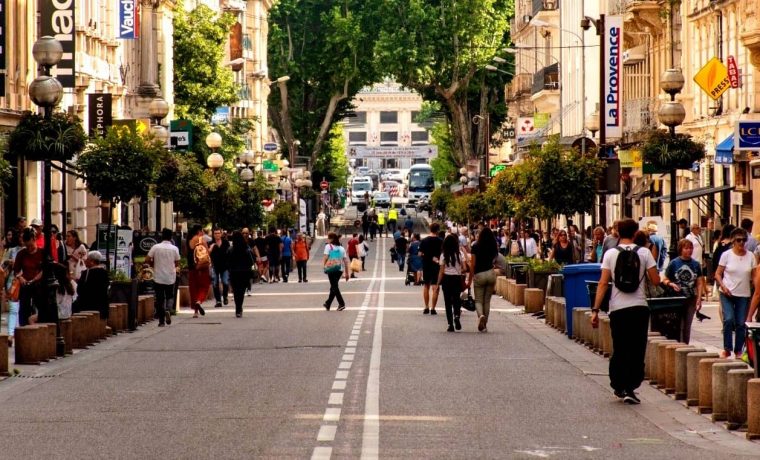There have been a number of significant changes to the high street in recent years. More regularly do headlines seem to announce the redesigns of national stores taking place, led by major brands who are not only investing a great deal into modern shop designs but are simultaneously foreseeing worthy potential in the future of brick and mortar retail.
A recent example of this includes Lush’s multimillion-pound reimagining of their stores. This renovation will see the high street retailers not only refresh their familiar market stall design, which they refer to as an oasis of kindness on the street, but also move operations to a more locally focussed model, emphasising the unique position and customer interests of individual stores.
As the intentions of retailers’ redesigns are shared, it becomes more apparent as to how our high street will take shape over the coming decade. We’ve collected the most common trends, those among the majority of upcoming brand designs, to discuss how the high street will be reimagined in 2022.
Future Sustainability
Perhaps the most widely recognisable shift among high street retailers is the shift toward a greater sustainability. This comes in response to changing customer priorities with reports stating that the majority of customer demographics are no longer only preferring brands that celebrate sustainable design and products but actually prioritise them in the interest of ethical consumerism.
As such, all aspects of interior retail design is being reimagined with the environment in mind. Retailer preference for store furniture and shop shelving are moving toward those produced locally and with sustainably sourced or even post-consumer materials. Efforts are also being made to reduce energy consumption and waste production too.
Adaptation & Efficiency
With the rising costs of overheads and the need for responsive services, retailers are seeking greater adaptability and efficiency within their stores, even downsizing previously large spaces in an effort to streamline their retail operations.
Such design intentions are manifesting as prioritised retail experiences, those occasionally without cash transactions or where products can be browsed in-store but are purchased online. This allows retailers to operate with low costs while delivering a forward-thinking approach to consumers, appealing to the growing numbers of shoppers who shop online.
Local Impact
Retailers are changing the way they think about location, seeking to find ways in which their store can benefit the community beyond products. Bookstores like Waterstones and Stanfords, for example, have found success by hosting book-related events, book clubs, and author talks, offering their space to the community not only in the direct interest of products but to benefit the culture of an area.
Shops are also being designed in a way that encourages slow browsing, with spaces being set up for customers to spend a greater amount of time within. Previously this has manifested itself as stores hosting a cafe space but can now be seen with retailers creating ‘home-like’ spaces, encouraging customers to relax and immerse themselves in high-quality, stylish brand designs
Keep redesigns in mind for your commercial space as you try to stand out and create a welcoming atmosphere. Please see the resource below for help making sure your business’s first impression is a good one.
Provided by Landmark Bird Control – experts in commercial bird netting installation
















